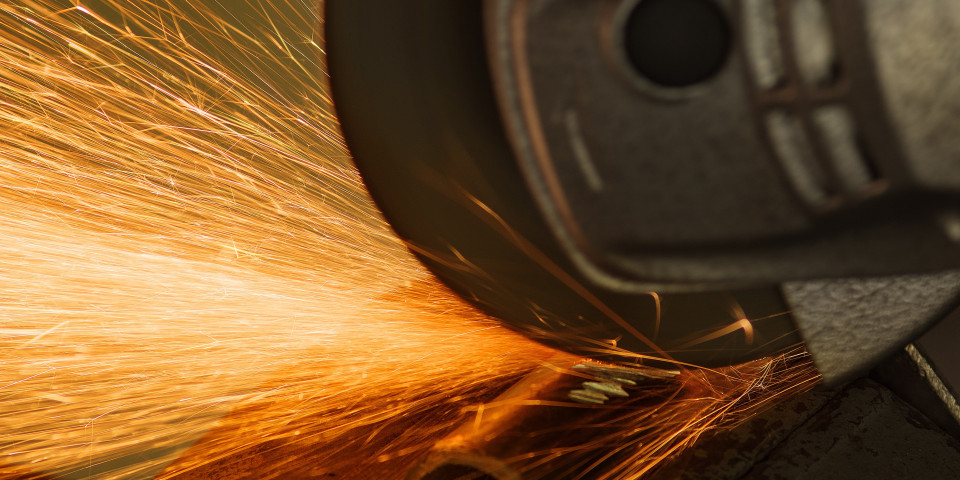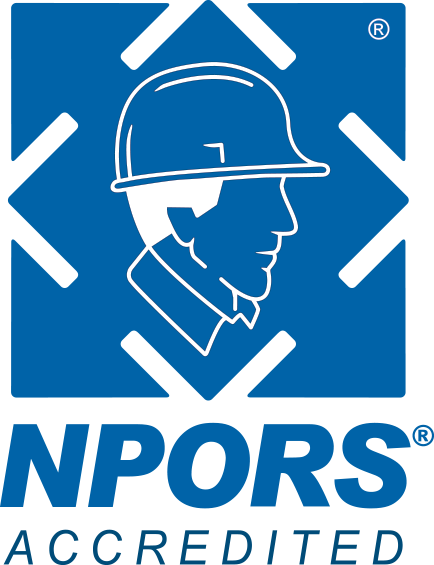Latest News
The ESS Guide to Abrasive Wheels Training
Posted on Friday, 21st February 2020

There are few disciplines in the construction industry more dangerous than operating abrasive wheels. These powerful pieces of equipment are integral to certain aspects of construction work. To ensure the safety of those working with and around the equipment, they must be handled with extreme care, with the right procedures in place. This guide looks at the training options available across a variety of different job roles which involve the operation of abrasive wheels…
What are Abrasive Wheels?
Starting with the basics; abrasive wheels are revolving wheels designed for cutting and grinding materials such as metal and concrete. The term ‘abrasive wheels’ relates to the abrasive particles which have been bonded together to make the compound which the wheels are made of. You might also hear them referred to as grinding or cutting wheels. Abrasive Wheels can be fitted to different types of mechanical apparatus, like petrol saws and angle grinders, or otherwise known as handheld machines.
What are the dangers of operating Abrasive Wheels?
When operating abrasive wheels, the threat of the revolving wheel injuring operators, colleagues or pedestrians is substantial. Due to their power, design and material, the consequences of parts of the body coming into contact with the wheels can be life-changing, or even life-ending. The faster the wheel revolves, the more dangerous it becomes.
But this threat is far from the only hazard that operators will have to contend with when using this equipment. Other dangers include:
- Wheel breakage/ burst or entanglement with revolving parts – wheels breaking or becoming jammed can cause materials to be spat out by the machine, potentially causing serious injury. This may be caused by the abrasive wheel speed not being equal or greater than the machines RPM, using it on the wrong material or for its correct usage. Fixing the equipment also poses many risks to the person carrying out the maintenance and and anyone using the machinery afterwards. Only those with the correct training should be performing repairs.
- Dust and flying particles – dangerous dusts, smokes and flying particles may be emitted when cutting or grinding with the machinery. Depending on the material being worked on, some of these may be more dangerous than others. Serious respiratory issues leading to life-ending conditions such as cancer are a very real consequence of inhaling these harmful pollutants.
- Noise – operating around abrasive wheels can get incredibly loud. If the right protective measures are not put in place, permanent hearing damage can be caused, including everything from tinnitus to deafness.
- HAVS - HAVS stands for Hand-Arm Vibration Syndrome, a condition which is often caused by operating vibrating machinery. This condition can lead to significant, permanent and debilitating damage to the nerves, joints and muscles of sufferers.
The only way to protect you and your colleagues from these dangers when operating abrasive wheels is for operators to have the correct training, equipment and PPE.

What is Abrasive Wheels training and who needs it?
Abrasive Wheels training is a legal requirement for anyone operating this equipment in the workplace. Abrasive Wheels are extremely dangerous and the only way to reduce risk is through theoretical and practical training in operating the machinery.
There are multiple training options available depending on the needs of the worker. Factors such as the worker's responsibility, job role and equipment they handle will dictate which training is needed to perform their job safely. At ESS we provide a range of different courses to meet different on-site needs:
Abrasive Wheels Training with ESS
Abrasive Wheels Awareness
This course covers the basics in abrasive wheel health awareness, applicable to all staff who work with or around the equipment. This BAF-accredited course covers all of the essential training required by health and safety regulation to create a workplace culture of safe practise. The course explores:
- Health and safety legislation
- Hazards and risk control measures
- Personal Protective Equipment (PPE)
- Types of abrasive wheel machines and their safe use
- Resin and vitrified bonded abrasive wheel selection, marking, identification and inspection
- Correct use, setting, adjustment and inspection of flanges, guards and accessories
- Pre-use machine safety checks
- How to mount abrasive wheels on various equipment including hand angle grinder, saws and bench grinders
- Bench grinder familiarisation
- Set up and safe working of applying an Abrasive Wheel to a grinder
- Practical safe set up
This course will take half a day, with the certification valid for three years for participants who successfully complete the short theory test and attend the full training course.
Abrasive Wheels with Practical Cutting/Grinding
This practical cutting and grinding course is made up of two sections: theoretical awareness training and practical training on the equipment. This first part of the training is the same as the Abrasive Wheels Awareness course listed above, with the inclusion of a unique second half of the day which provides learners with a practical session using the equipment for cutting and grinding. As well as the awareness theory test, participants will also be asked to complete a practical assessment on safe use.
Abrasive Wheels Train the Trainer
Designed to give potential trainers the skills and knowledge to be able to train others in how to operate abrasive wheels safely. This two day course covers the essential operational requirements necessary for the role including:
- Statutory requirements and regulations

- Types and characteristics of abrasive wheels
- Manufacturing abrasive wheels
- Abrasive wheel machine parts
- Operating speeds for abrasive wheels
- Guards, rests and accessories
- Dressing and balancing
- Specific mounting produces
- Hazards and preventative measures
- PPE
- Inspection, testing for damage and reporting problems
- Handling and storage
In addition, learners will also develop a range of ‘Train the Trainer’ educational skills, such as teaching methods and lesson planning. Like the other ESS abrasive wheel courses, the certificate is valid for 3 years. All three courses that provide ESS certification upon completion are available for CITB grant funding, making the process of training staff much less expensive and off-putting for smaller organisations.
NPORS Training with ESS
As well as our own courses, we also deliver versions of Abrasive Wheel Awareness and Practical Cutting/ Grinding which are accredited by NPORS.
- NPORS Abrasive Wheels Awareness (N301a)
- NPORS Abrasive Wheels with Practical Cutting / Grinding (N301b)
The bulk of the content provided in both training courses is the same as the ESS alternatives, but are not eligible for funding. The main benefit of these NPORS courses is they have a five-year validation for their certification.
NPORS Abrasive Wheels Handheld Petrol Driven Cut Off Saw (N017)
This training course is designed specifically for workers who will be operating a petrol driven cut-off saw, also known as abrasive saws or chop saws. Despite the name, these tools are technically not saws, they are essentially abrasive wheels which are handheld. This makes them much more convenient to move around building sites compared to the stationary wheel. However, this equipment has it’s own unique dangers which require additional training for operators.
This NPORS course covers the essentials of using cut-offs saws including:
- Understanding the dangers of working in the industry and their responsibilities as an operator

- A working knowledge of the manufacturer’s handbook and relevant legislation
- Be able to locate and identify the major components of the machine and explain their functions
- Be able to locate and identify key controls and explain their functions
- Conduct all pre-operational checks in accordance with manufacturers and legislative requirements
- Identify and maintain PPE appropriate for petrol driven cut off saw
- Select suitable type of blade relative to the work being undertaken
- Conduct all necessary safety checks at the work area and set up safety zone
- Prepare the machine for use and operate machinery safely and efficiently
- Environmental considerations
- Storage and transport of petrol driven cut off saw
- Carry out all end of shift and shut down procedures
Abrasive Wheels training near me
We deliver our courses across the whole of the UK. On top on this, we also provide in-company training to reduce the time and financial burden on companies. To discuss our courses with a member of our team, why not speak to a member of our training team on 0115 8970 529. You can also email us at info@essentialsiteskills.com.
Face Fit Testing
As well as training on the equipment itself, your staff may need Face Fit Testing to combat the dangers of air-born pollutants. Testing ensures workers have equipment that’s secure and provides the adequate protection needed for their job role. We also provide a Face Fit Train the Tester course, which provides learners with the necessary knowledge and practical experience to perform face fit tests to the qualitative method. This training is ideal for anyone who is responsible for health and safety on sites where RPE is necessary. To learn more about the ins-and-outs of this topic, you can check out our blog on Face Fit Testing, or our other entry on the dangers of COPD (lung disease) in the construction industry.
Further information
For a more detailed breakdown of the specifics of abrasive wheel health and safety, the HSA have an in-depth guide for operators. To find a full list of the training ESS can provide, check out our online course index.


